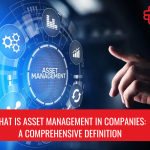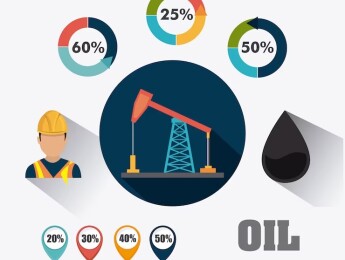For any organisation that deals with finances or valuable assets, it is crucial to establish strong management to maximise investments and secure profits. When dealing with anything of value, the organisation must also have a strong focus on protecting its assets and implementing strong security plans.
Asset management and risk management are intertwined; one cannot be successful without the other. Identifying financial and physical risks is essential for managing assets, as it allows the professionals involved to make smarter and more secure business investments.
Asset protection and security can come in many different forms. One side of security is protecting assets from the bounds of debt and creditors and ensuring assets remain uninvolved in any financial trouble. Another area of security is protecting it from external threats and attacks, such as fraudulent activity and cyberterrorism. Those responsible for asset protection should carefully analyse potential risks to implement various systems and methods to guarantee maximum security for all assets.
Upon completion of this course, participants will be able to:
- Understand the vitality of asset management and protection within an organisation.
- Recognise the consequences of poor asset management and protection.
- Identify internal and external threats to assets and all organisational vulnerabilities.
- Explore the different components and functions of an integrated security system.
- Examine what skills, competencies and responsibilities are involved within asset management.
- Implement various strategies to improve asset management without sacrificing safety and protection.
- Analyse and incorporate measures to defend against fraudulent activities, data protection, and cybersecurity.
- Effectively operate access control systems to increase asset protection.
This course is designed for anyone responsible for asset management and protection within an organisation. It would be most beneficial for:
- Operations Managers
- Cybersecurity Managers
- Security Officers
- Asset Managers
- Risk Analysts
- Risk Managers
- HSE Personnel
- Finance Managers
This course uses a variety of adult learning styles to aid full understanding and comprehension. Participants will explore existing cybersecurity systems to highlight key factors protecting assets and identify possible areas of weakness within the system.
They will be allowed to participate in various learning activities, such as presentations, video materials, group discussions, and practical activities. These will allow the participants to understand the taught content and develop related skills fully. Through the group activities, the participants can work alongside their peers and provide and receive constructive criticism to improve their capabilities further.
Day 5 of each course is reserved for a Q&A session, which may occur off-site. For 10-day courses, this also applies to day 10
Section 1: Fundamentals of Asset Management
- Defining what asset management is and its role within an organisation.
- Identifying the key skills, roles and responsibilities of an asset manager and other asset management professionals.
- Understanding the consequences of poor asset management on different stakeholders and the organisation.
- Examining national and international asset management standards and being compliant with industry ideals.
Section 2: Asset Management Strategies
- Exploring organisational and individual goals, objectives, and overall expectations.
- Create an action plan detailing these factors and evaluate ideal strategies to meet goals.
- Understanding the five components of asset management – asset inventory, level of service, criticality, lifecycle costing and long-term funding.
- Monitoring strategy progress and making amendments as necessary.
Section 3: Security Planning
- The importance of effective security planning.
- Creating a workplace culture that is open and encourages security changes and developments.
- Increasing reputation through stronger security measures – building trust with stakeholders by guaranteeing protection.
- Key principles and concepts of emergency response teams and on-site security management.
- Integrating physical security and digital protection throughout the organisation.
Section 4: Security Surveying and Threats to Assets
- What is a security survey, and how can one conduct a successful one?
- Analysing internal and external factors and how they can contribute to loss.
- Conducting risk assessments and hazard audits to identify potential risks surrounding assets.
- Utilising assessment data to carry out security, risk, and vulnerability analysis.
- Various physical and cybersecurity measures can protect and reduce risk potential.
Section 5: Security Operations Management
- Establishing crisis management plans, emergency responses and safety procedures based on risk assessment data.
- Identify vulnerable systems or individuals and explore additional protection for these.
- Creating business continuity plans to ensure minimal ‘down-time’ after a risk occurs.
- Managing reputational impact and rebuilding trust with stakeholders.
Upon successful completion of this training course, delegates will be awarded a Holistique Training Certificate of Completion. For those who attend and complete the online training course, a Holistique Training e-Certificate will be provided.
Holistique Training Certificates are accredited by the British Assessment Council (BAC) and The CPD Certification Service (CPD), and are certified under ISO 9001, ISO 21001, and ISO 29993 standards.
CPD credits for this course are granted by our Certificates and will be reflected on the Holistique Training Certificate of Completion. In accordance with the standards of The CPD Certification Service, one CPD credit is awarded per hour of course attendance. A maximum of 50 CPD credits can be claimed for any single course we currently offer.
- Course Code PO1-128
- Course Format Classroom, Online,
- Duration 5 days











